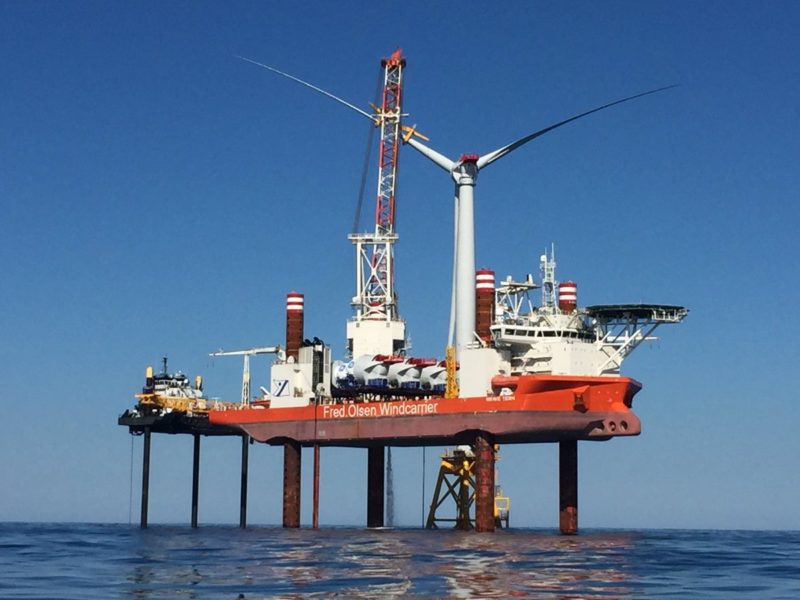Since it organized four years ago, the non-profit Business Network for Offshore Wind has been working to bring together U.S. companies and talent to build a new supply chain for offshore wind energy.
That includes the Gulf of Mexico oil and gas industry – the world’s oldest and deepest reservoir of offshore energy operating experience. Recently the network has been in New Orleans, reaching out to builders, vessel operators and anyone else who can help develop the dozen or so offshore turbine projects planned off the East Coast.
“We need vessels. We need vessels that can lift the nacelles (turbine housings) and the rotors,” said Ross Tyler, the network’s executive vice president told an audience of Gulf operators at the International WorkBoat Show last month.
When Deepwater Wind built the first commercial U.S. offshore wind installation at Block Island, R.I., it sought out two Louisiana companies. Steel foundations for the five turbines came from Gulf Island Fabrication Inc. in Houma, installed with liftboats from Galliano-based Montco Offshore.
Deepwater’s next venture will be at least three times as big as the Block Island project, and much larger arrays are planned from Massachusetts to Maryland.

Liz Burdock is president and CEO of the Business Network for Offshore Wind.
Weeks before the WorkBoat Show, Liz Burdock, CEO and president of the Business Network for Offshore Wind, was in town to meet with members of the Offshore Marine Service Association. I recently talked to her for our upcoming January issue of WorkBoat.
“A lot will come out of adapting oil and gas technology,” said Burdock. “The next big thing for offshore wind is floating (turbines) … that technology is directly derived from oil and gas.”
With 20 years’ experience in the field, Burdock started her career in energy efficiency and environmentally friendly measures at the U.S. Department of Housing and Urban Development. Recently WindPower Monthly named her one of its most influential industry figures of 2018.
“With the US offshore sector set to take off in a big way in the next couple of years, Burdock's voice and experience will become ever more valuable,” the magazine wrote.
“Assembling the components to kick start the U.S. offshore wind sector, Burdock has been working in the sustainability field for the best part of 20 years," the magazine said, "she (also has) focused on establishing the Business Network for Offshore Wind, a not-for-profit organization to support offshore-wind development in the US.”
The Bureau of Offshore Energy Management is preparing for another lease sale off southern New England this month, and shortly after New Jersey state utility officials may commit to buying 1,100 megawatts of future offshore power. New York could reach a purchase agreement in February.
The industry still faces big challenges. Developer Vineyard Wind and commercial fishermen are still at odds over the size and configuration of proposed vessel transit lanes near Martha’s Vineyard, for example.
But wind companies will soon be in a position to place their long-term orders for wind turbines, and that would be followed by orders to U.S. shipyards for support vessels and crewboats, said Burdock.
“I think the dominoes are going to start falling,” she said.





